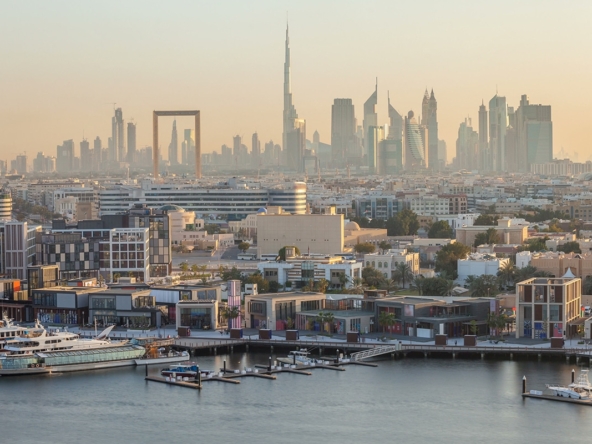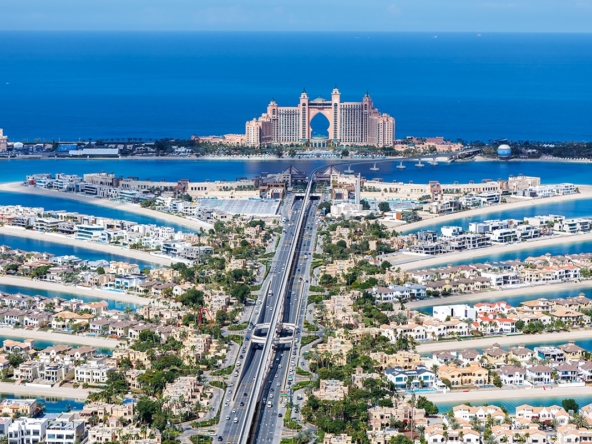Many tenants in Dubai are moving to Sharjah and northern emirates due to increase in rents, increased quality developments, and hybrid work arrangements that offer more locational flexibility to employees.
This is the third cycle, akin to the previous two cycles of 2009 and 2014, where tenants are locating to northern emirates to beat rising rentals. Industry executives suggest that tenants can save around Dh77,000 by relocating due to rental differentials.
Rents in Dubai, Sharjah and Northern Emirates have exponentially increased in the post-pandemic period as the population grew in the UAE, attracted by job opportunities in various sectors. However, rents in Dubai are more than double of neighbouring northern emirates.
Renting a studio in Dubai ranges between Dh30,000 to Dh70,000 per annum while one-bedroom costs between Dh50,000 to Dh130,000. In Dubai, Deira, International City, Sports City and Jumeirah Village are the most affordable areas while Palm Jumeirah, Dubai International Financial Centre (DIFC) and Downtown are the costliest areas to rent an apartment.
In Sharjah, rents for studios cost between Dh12,000 to Dh40,000 and one-bedroom apartments from Dh14,000 to Dh55,000 a year. In the northern emirates of Ajman, Umm Al Quwain, Fujairah and Ras Al Khaimah, studios and one-bedroom cost Dh12,000-Dh34,000 a year and one-bedroom around Dh15,000-Dh50,000.
“Similar to previous periods of market growth, we observed an increase in tenants relocating from Dubai to the northern emirates, driven primarily by affordability. Many long-term tenants are facing significant rent hikes in their current homes, particularly following the update of the Real Estate Regulatory Authority (Rera) rental calculator in March 2024. Although rental rates are rising in the northern emirates, they are still significantly lower than most Dubai communities, with the added benefit of typically larger unit sizes,” said James Joughin, executive director for advisory and valuation at Asteco.
Beyond rental pressures, he said several other factors also contribute to this migration including job growth in the northern emirates, fuelled by economic expansion; increased availability of quality developments and master-planned communities; and hybrid work arrangements offering more locational flexibility.

Jonathan Jackson, property consultant at Huspy, said overall, living costs in Dubai are higher compared to Sharjah. “If you work in Dubai but live in Ajman or Ras Al Khaimah, fuel costs rise, but rent and food are generally lower, offering a more balanced cost of living.”
For example, in Business Bay, three-bedroom apartments averaged over Dh200,000 and studios at over Dh55,000.
In contrast, Sharjah offers significantly lower rents, with three-bedroom villas listed at around Dh100,000 and some as low as Dh90,000.
For those driving a V8 SUV with an average fuel consumption of 6 litres per kilometre, a 200km daily commute would cost about Dh93 per day, totalling Dh33,000 annually. If adding the cost of a 3-bedroom villa and the SUV, annual expenditure would be around Dh123,000, excluding food and utilities.
However, in Dubai, a three-bedroom apartment alone may cost over Dh200,000 in some places; hence, the overall living cost in the emirate is higher.
Some Dubai tenants are relocating to Ras Al Khaimah as well, which is over 110km from Downtown. This is attributed to the increase in quality developments and improved physical and social infrastructure.
Who is migrating
Jackson added that precise data on the income bracket of salaried individuals in the northern emirates is not fully transparent, however, it is estimated that the average person renting a three-bedroom apartment in Sharjah or Ajman earns between Dh7,000 and Dh15,000 per month.
“These areas also have their share of long-term residents, including wealthy individuals who have lived there for many years and prefer not to relocate. You’ll notice a decrease in the population of western expatriates as you move into these emirates, with a more prominent presence of South Asians, Africans, and Arabs. Ajman and Sharjah also have a significant number of Emiratis, many of whom have lived there throughout their lives,” added Jackson.
James Joughin of Asteco stated that it appears that most of those individuals and families in the lower-to-mid income bracket are migrating to the northern emirates because of significantly lower housing costs compared to Dubai; school fees, which constitute a notable portion of the cost of living for families, tend to be lower in the northern emirates compared to Dubai; and the rise of remote work has enabled some professionals to relocate to areas with a lower cost of living while maintaining their employment in Dubai.
“Some individuals may be seeking a change of pace or lifestyle, while others may have specific job opportunities in the northern emirates,” added Joughin.

Impact of rising traffic
After the summer holidays, traffic between Dubai and the northern emirates has increased dramatically due to the reopening of schools and the return of families from long holiday breaks. This is prompting some tenants to think of relocating, but it is not a primary deterrent, say industry executives.
“Whilst the commute between Sharjah/Ajman and Dubai remains a consideration for potential movers, it is not a primary deterrent. For many, the financial advantages, improved infrastructure, lifestyle preferences and long-term outlook of the northern emirates continue to outweigh the traffic challenges. The rise of remote work and hybrid work models has reduced the need for daily commutes for many individuals, enabling them to live in more affordable locations while retaining their employment in Dubai,” said Joughin.
Jackson said that some residents have returned to Dubai due to the extensive traffic congestion experienced in other emirates, with some spending over 1.5 hours daily in traffic.
“Ultimately, the choice depends on whether one values financial saving or the comfort and efficiency of urban living,” he concluded.




